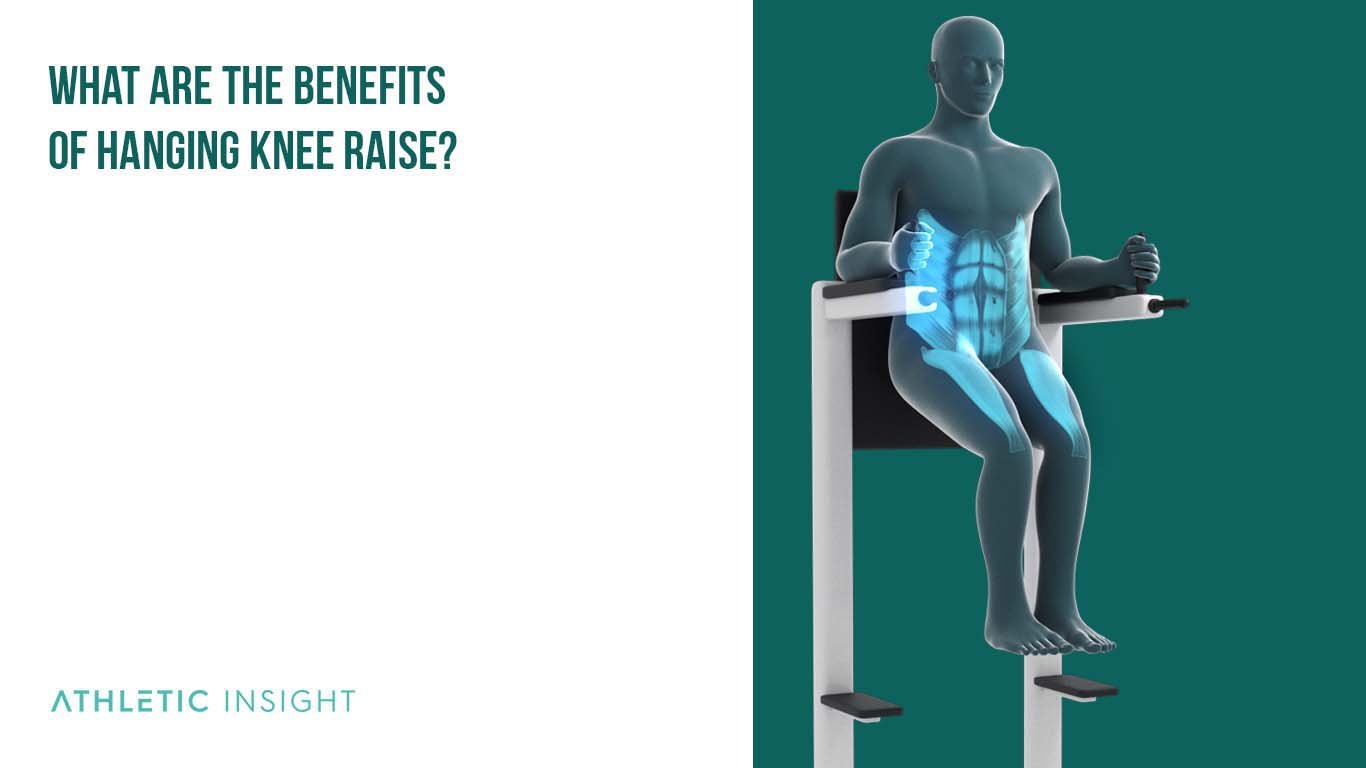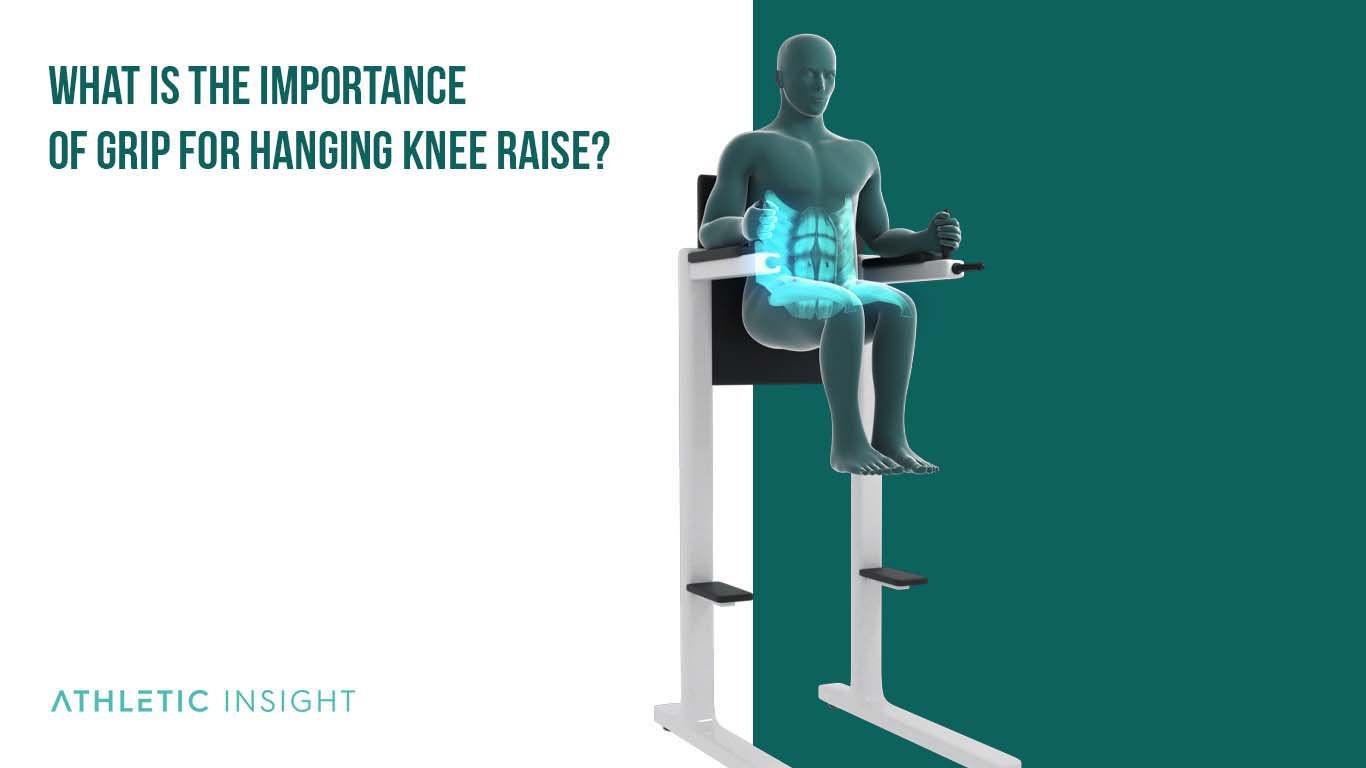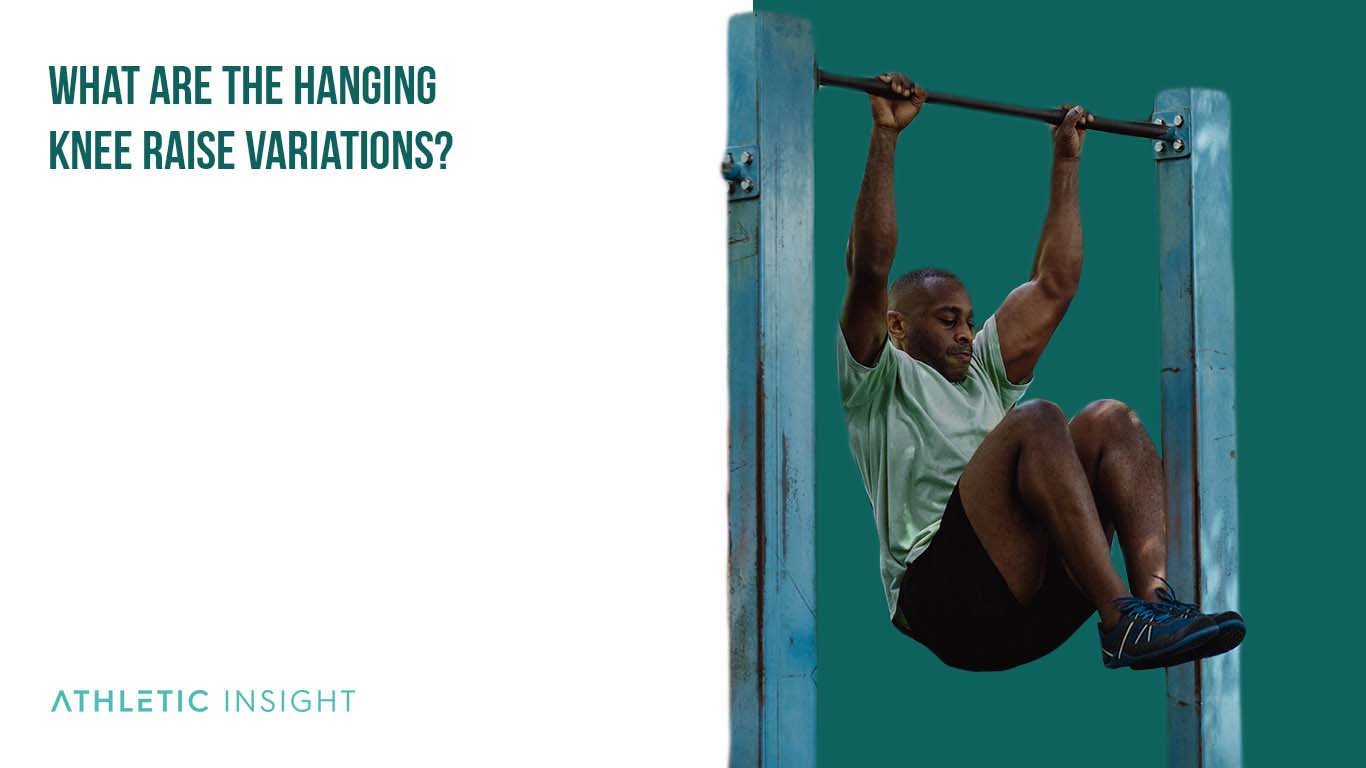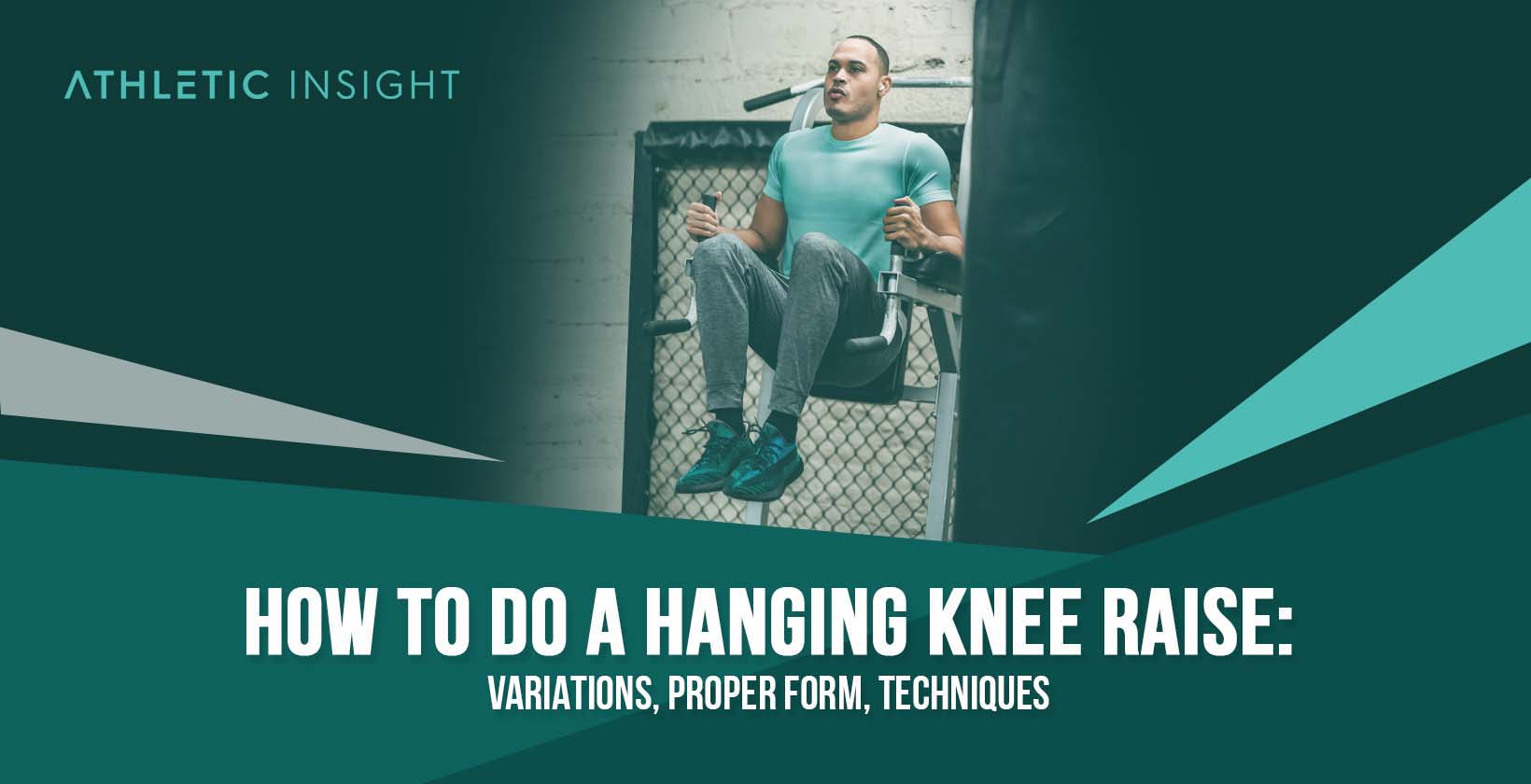The hanging knee raise is a lower abdominal workout that isolates the ab muscles and helps develop a strong core. They can also provide a grip and forearm workout, as a firm grip and steady forearms help perform the exercise.
Hanging knee raises benefit core strength, stability, grip, and forearm strength. The exercise primarily targets abdominal muscles, such as the rectus abdominis and the external obliques, but will also target the internal obliques and hip flexors. Forearm muscles prove crucial during this exercise.
To keep a proper form while doing the hanging leg raises workout, keep the legs in a hollow stance, with lower abs braced, then bring your knees all the way up toward the chest.
There are six different popular types of hanging knee raises, but the two main hanging knee raise variations are the supine knees-to-chest and the supine straight-leg raise.
As a compound lift, hanging leg lifts use multiple muscle groups simultaneously to create a maximized effect. Avoid common mistakes while performing hanging leg raises, like swinging your body too much, not engaging proper grip strength, keeping your arms straight, or not keeping a posterior pelvic tilt throughout.
How to Perform Hanging Knee Raise with Proper Form?
The Hanging Knee Raise is an effective exercise and one of the best abs workouts to include in a routine. Keep your arms straight with a firm grip on the bar. Keeping the rectus abdominis and the external obliques engaged throughout the movement should prevent you from relaxing at the bottom. Bracing your lower abs will help as you raise your legs from the ground toward your chest.
It’s crucial not to relax at the bottom of the movement. Keeping the muscles engaged until you are off the bar is vital to making this exercise work.
- Take an overhand.
- Pronated hold on your pull-up bar or equivalent equipment.
- Turn your pelvis toward your ribs and glutes to get your lower abs working.
- Keeping a hollowed stance and braced lower abs.
- Slowly elevate legs to chest.
- Return to the bottom position by slowly lowering your legs.
- Repeat for the desired number of repetitions.
Maintain proper form throughout by keeping a pronated grip with your palms facing away. Gently squeeze the glutes as you raise your legs to keep the lower back from arching.
What are the benefits of Hanging Knee Raise?
The knee lift exercise benefits the abdominal muscles, increases stability, and strengthens your grip. The hanging leg lift, or hanging knee raise, engages the entire upper-body musculature and increases overall strength and definition.

There are five primary benefits to the hanging knee raise that make it a crucial workout.
- Develops your abdominal area
- Gives you midline stability
- Improves your gymnastic progress
- Utilizing Capabilities
- Application to Toes to Bar, L-Sits, and more
The hanging knee raise activates the entire core region as a comprehensive abdominal exercise. Having a robust and stable core is critical to performing other exercises successfully.
What are the mistakes in Hanging Knee Raise form?
Good hanging knee raise form is a critical piece of the exercise. Bad form results in muscles being left unworked and disengaged. The results of lousy form negatively impact the overall results of working out, especially when performing abdominal exercises.
Good hanging knee raise form means avoiding critical mistakes.
- Swinging the body too much.
- Failing to maintain control.
- Not engaging proper grip strength.
- Failing to keep posterior pelvic tilt throughout.
- Not keeping arms straight.
The abdomen connects to the pelvis, not the legs, which means you’ll keep the posterior pelvic tilt throughout the exercise critical.
Swinging legs will not engage the rectus abdominis or the external and internal obliques. Movements should always be slow and controlled, engaging the muscles rather than relying on momentum. Otherwise, you probably will do one of the Hanging Knee Raise Mistakes.
How to Determine Proper Weight for Hanging Knee Raise?
A weighted knee raise adds intensity to the standard knee raise exercise. Adding weight for more experienced lifters helps further engage the abdominal muscles. For example, use ankle weights or squeeze a dumbbell between your feet. Start with a low weight to avoid straining and injuring the abdomen. Once you can perform the movement efficiently with that weight, move to the next weight up.
What is the importance of grip for Hanging Knee Raise?
The grip strength is the pressure or force applied by simply holding onto something with your hands. Having a strong grip is essential for working out, especially in the hanging knee raise. Using a pronated grip with palms facing away from the body, a firm grip will help keep the arms straight and the forearms engaged throughout the movement. Doing hanging leg raises will also help improve grip strength over time.

Which muscles are involved while performing Hanging Knee Raise?
The hanging knee raise engages the abdominal muscles, as well as others.
- Rectus abdominis
- External obliques
- Internal obliques
- Hip flexors
- Pronator teres
- Flexor carpi radialis
- Palmaris longus
- Flexor carpi ulnaris
The abdominal muscles benefit from being constantly engaged and pulling the legs up toward the chest. Core stability is one of the primary benefits of exercise.
Grip strength and forearm development benefit from the pronated hanging position that the movement requires. Keeping a firm grip engages the forearm muscles and keeps the body steady while performing the exercise.
Hanging knee raises also benefits the shoulder girdle muscles.
What are the Hanging Knee Raise Variations?
The variations of the Hanging Knee Raise include the basics of the hanging knee raise with a slight twist or changes during the exercise. Each variation depends on the same core muscles engaging while focusing on different movements.

- Supine Knees-to-Chest
- Supine Straight-Leg Raise
- Dead Hang from a Bar
- Hanging Leg Raise
- Weighted Knee Raise
- Toes-to-Bar Raise
The supine variations are modified versions of the hanging knee raise, allowing you to lie on your back on the floor. While the supine knees-to-chest or straight-leg raise won’t engage the forearm and shoulder girdle muscles, it requires the same abdominal focus.
The dead hang requires body control and grip strength. Instead of bringing your knees to your chest, keep your legs extended straight and raise your toes toward the sky in the hanging leg raise.
The weighted knee raise uses ankle weights, a weighted ball, or dumbbells gripped between the feet and requires more strength in the abdominal muscles. The toes-to-bar raise depends on strong arms and shoulder girdle muscles to bring your legs up towards the bar.
What are the necessary equipments for Hanging Knee Raise?
A bar to hold on to, such as a pull-up bar, is required to begin practicing the hanging knee raise exercise. Other equipment is optional, depending on the variation being performed. You can find easily the Best Hanging Knee Raise Barbells everywhere.
Which muscles can be affected more by Hanging Knee Raise?
The muscles that can be most affected are the abdominal muscles.
- Rectus abdominis
- External obliques
- Internal obliques
- Hip flexors
The rectus abdominis is the most significant muscle to engage during the exercise. However, the obliques are critical for proper form.
What are the Hanging Knee Raise related facts?
There are 4 Reasons why the Hanging Knee Raise is the best exercise below:
- Hanging knee raises improves core stability.
- Hanging knee raises are critical for abdominal functionality.
- Developing your core will improve other areas of exercise.
- Hanging knee raises are best combined with a nutrition plan.
The hanging knee raise workout is a helpful movement to add to any exercise routine for maximum results and functional core and grip strength.
Does Hanging Knee Raise affect the hormones?
The hanging knee raise is a compound movement, working for multiple muscle groups with resistance and intensity. Hanging knee raises are a metabolic exercise and affect human growth hormones (HGH). As muscles are exhausted, the natural reaction is an HGH release.
HGH is crucial for increasing muscle mass. Adding high-intensity exercises like the hanging knee raise boosts the release of the hormone and triggers the desired results.
Is Hanging Knee Raise a military movement?
Yes, the hanging knee raise is a military movement. Military exercises are dependent on core stability and compound movements. The hanging knee raise provides both.
Is Hanging Knee Raise essential?
Yes, the hanging knee raise is an essential workout. It engages the core muscles, and as a compound exercise, it provides an effective workout for the entire upper body. In addition, it is one of the fundamental human movements.
Is Hanging Knee Raise dangerous?
Yes, the hanging knee raise can be dangerous when performed with improper form. For example, not using a posterior pelvic tilt or having limp arms will increase the risk of hurting your shoulders, wrists, and hips. Adding too much weight will strain your abdominal muscles.
Is Hanging Knee Raise a compound exercise?
Yes, a hanging knee raise is a compound exercise. Compound exercises work for multiple muscle groups simultaneously. When performing the hanging knee raise, the abdominal, forearm, and shoulder girdle muscles are engaged.
What can replace the Hanging Knee Raise?
Supine knees-to-chest or supine leg raises are comparable replacements for the hanging knee raise.



